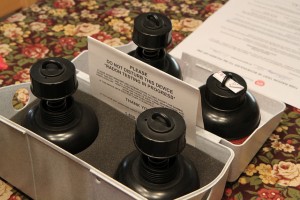 One of the most common places the deadly gas called radon can be found in a home is the basement or sub-levels. It seeps up from the ground beneath through cracks in the foundation, walls or floors. The only way to discover if radon is a problem or not is to test specifically for it. We recommend hiring a radon mitigation professional to conduct the tests.
One of the most common places the deadly gas called radon can be found in a home is the basement or sub-levels. It seeps up from the ground beneath through cracks in the foundation, walls or floors. The only way to discover if radon is a problem or not is to test specifically for it. We recommend hiring a radon mitigation professional to conduct the tests.
Radon is released when uranium undergoes radioactive decay, which resides in soil and rocks underground. The air pressure in a home is often lower than the pressure of the ground underneath, so it acts like a vacuum, sucking the radon inside. Once inside a home, the radon can collect in large quantities slowly affecting the residents within.
It is the second leading cause of lung cancer the world over. The only thing that increases the risk for lung cancer more than long-term exposure to radon is tobacco smoke – but only direct contact. Secondhand smoke actually poses a lower risk than radon exposure.
It often makes its way into a home and collects in the lowest areas. That said, it can spread through the entirety of a home and if left unchecked it can grow to dangerously high levels. In fact, it is estimated that 1 out of every 15 homes in the US has an unhealthy amount of radon within.
While radon does commonly plague lower levels such as a basement it does not mean homes without them are free from potential problems. The gas can get into any home regardless of age, makeup or location. Most newer homes are developed using radon resistant construction measures, but it doesn’t always work out like it’s supposed to.
In places where radon is a big problem, mitigation systems are necessary. While most require the test results to be sent to a remote location and take weeks to return, there is a method that can be done relatively quickly. Provided the hired mitigation professional has the proper equipment, they can install a computer based testing system in the home temporarily and print the results locally. In other words, the test results can be viewed almost instantly – after the testing period has completed obviously.
This is one of the main reasons we recommend hiring a mitigation professional to handle the testing process instead of doing it yourself.


